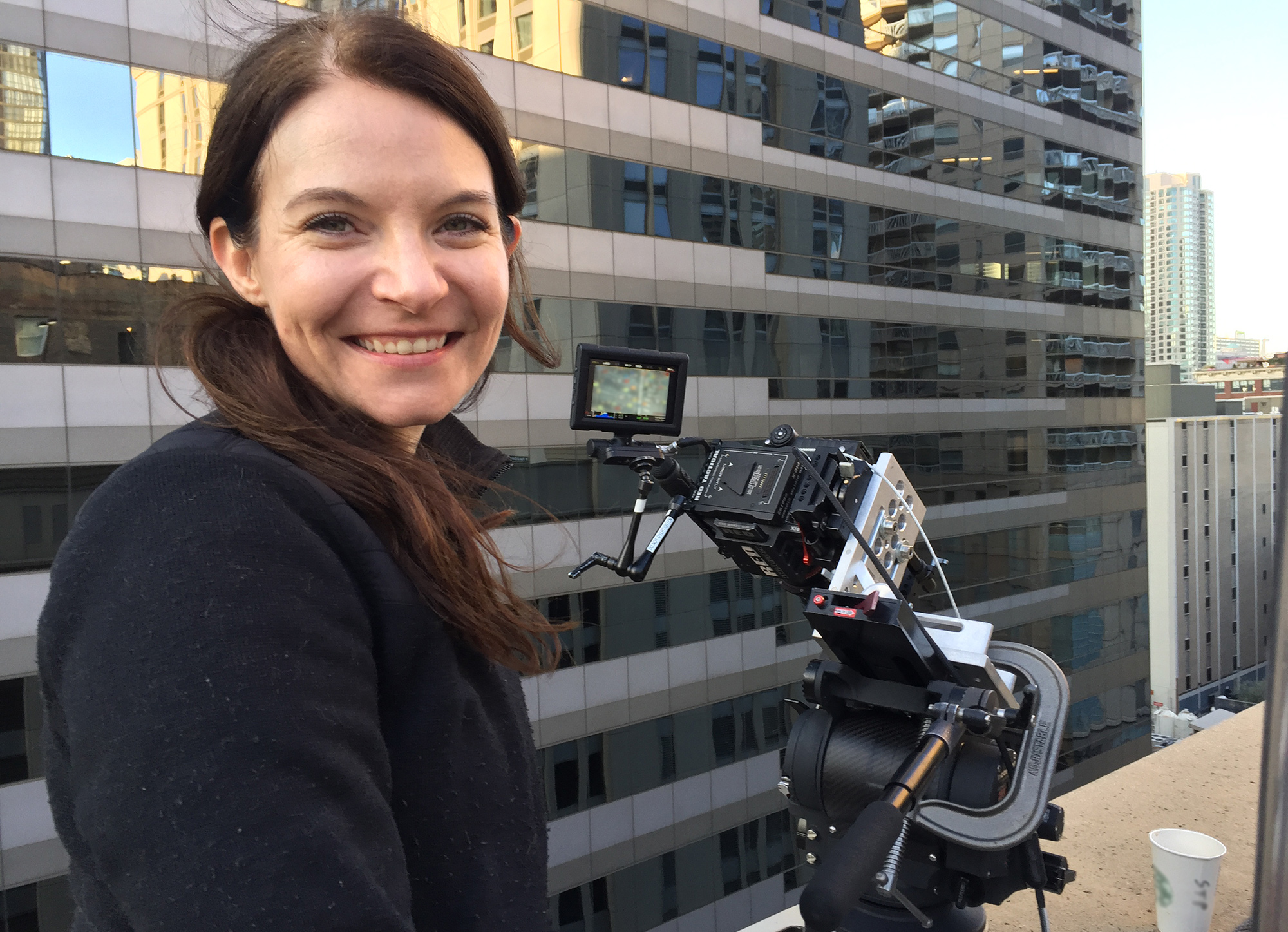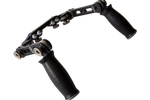As a freelance cinematographer, I operate most of my own work, and I typically work with an AC. Every job is different, so I modify my rig to suit the gig; however, there are definitely some staples that I go to every single time.
On set, I find that I could be operating handheld, on a specialty rig like a dolly or with a slider, a series of risers for an overhead shot, or something as extreme as on top of a high rise building with a Lambda head. Again, every gig is different! To me, that’s the importance of having a "go-to" setup – so you’re ready for everything. Here are a few of my favorite pieces of gear to pull off any shot.
CAMERA BODY & RIGGING
Since every job I do has different post and distribution needs, the specific sensor we use can change. That’s why the DSMC2 bodies are great – the accessories are universal. It’s one less thing for me to think about during prep so I can focus on the visual style. My lens mount of choice for the DSMC2 is the Titanium PL Mount.
I always like to build from the ground up. So, let’s start with the base. To build out the base of the camera, I typically go with these Wooden Camera accessories: Easy Riser, Unified Bridgeplate (19mm), LW 15mm Bracket, and Safety Dovetail.
One of the reasons I like this set up (well, really my AC benefits most here) is because we can mount wireless follow focus motors off the 15mm lightweight rods. If I'm using a studio lens that requires studio lens support, we don't have to switch the motors every time we switch a lens. Saves time! Also, I typically use a dovetail set up with this rig, so the bridge plate set up works best. Then if we're moving between support like an OConnor head, dolly, Lambda, nothing has to change.
For the top plate, I like Wooden Camera's Easy Top, since it allows me to relocate the LCD easily, usually on the AC side of the camera. My AC typically does most menu changes so I want them to have most control. It also allows for multiple 1/4 20 rigging options and the ability to add ribs like Wooden Camera Safety NATO Arms, which I often need for specialized rigs, like a safety chain when the camera is on a Lambda head looking down off a high rise building on to the Chicago Marathon below.

I love RED’s top handle because of its length and textured grip, and the fact that it includes record/stop functionality – something’s that always good to have when the rigging allows for it. You never know when you might need to pop off a quick low shot when the sun is setting, and this allows for a quick set up. Also, since I’m typically moving between handheld and other set ups all day, we need a good grip that the AC can grab onto to remove the camera from my shoulder.
When I’m shooting handheld, my preferred setup is the CAS Spidergrips and C3 Camera Comfort Cushion. I bring this cushion with me everywhere. The AC typically rolls the camera either wirlesslesly or off the camera body, but for those situations where I need to roll, CAS does make a right hand grip with a standard 3-pin Fischer run/stop cable. Another nice aspect to Wooden Camera's Easy Top is that it has a standard 3-pin Fischer run stop connector.
VIEWFINDERS & MONITORS
I typically operate off a monitor, as opposed to an EVF. However, if I’m operating handheld on a bright day then the EVF is necessary. Otherwise, my go to is the SmallHD 703 with a Wooden Camera AIR EVF Mount. I love the ability to add LUTs to the SmallHD, as well as the detailed waveform and false color modes.
For camera control, I like to use the 7” RED DSMC2 Touch Monitor and Wooden Camera RED Lemo to Pogo cable. And, the RED SIDEKICK is invaluable for an AC to easily change settings like white balance, frame rate, and playback. Especially if the camera is rigged in a unique position, the Sidekick allows another place to change menus other than the LCD. They can also assign four user buttons for themselves for functions like Peaking, Edge Focus, and magnification.
POWER
For power supply, I rely on the Wooden Camera D-Box. I love that it is tool-less and wireless. I typically power a wireless video transmitter with one of the 2-pin LEMO connectors, as well as an AC monitor, if they have one of their own that they like to use. The 3-pin Record/Start gives us the option to trigger from a wireless follow focus or from a hand trigger. I often use this last option for specialty rigs, where we are shooting a lock-off and don't want any shake, yet don't require a full-on wireless focus system.
OTHER
My other must-haves are Wooden Camera’s A-Box and B-Box. In the commercial and narrative world, we are always sending scratch audio to the XLRs on the A-Box, and the B-Box allows for easy jamming of timecode.































AbelCine encourages comments on our blog posts, as long as they are relevant and respectful in tone. To further professional dialog, we strongly encourage the use of real names. We reserve the right to remove any comments that violate our comment policy.
AbelCine publishes this blog as a free educational resource, and anyone may read the discussions posted here. However, if you want to join the conversation, please log in or register on our site.
We use Disqus to manage comments on this blog. If you already have a Disqus account registered under the same email as your AbelCine account, you will automatically be logged in when you sign in to our site. If not, please create a free account with Disqus using the same email as your AbelCine account.